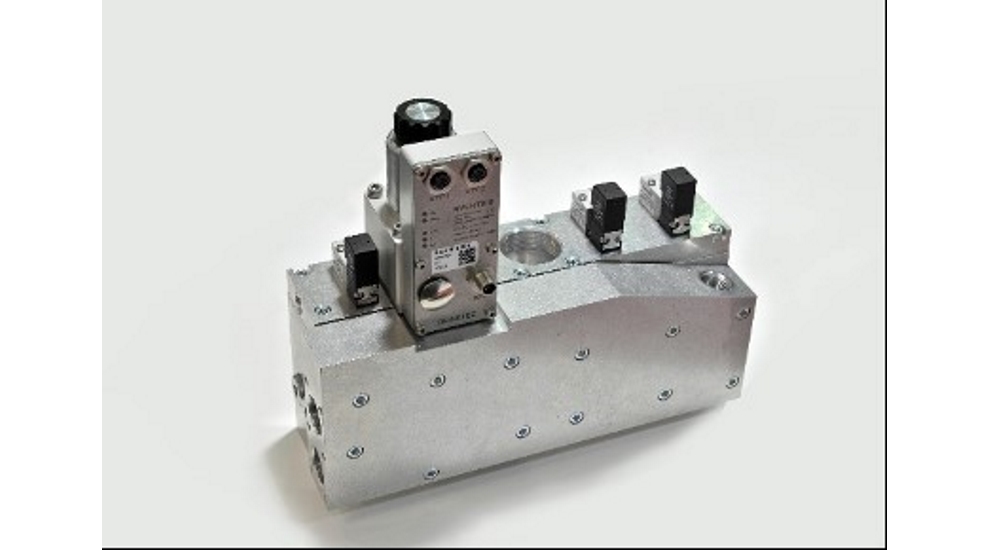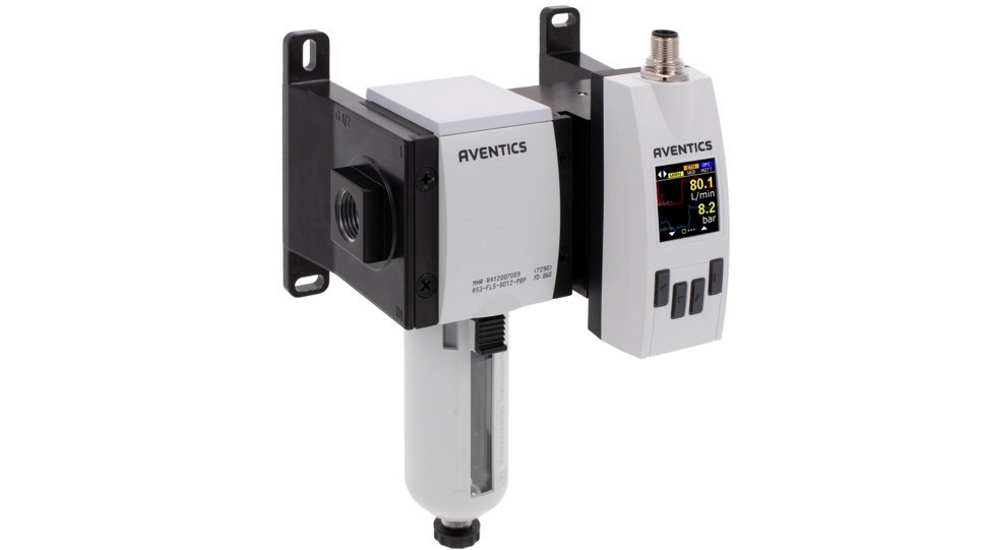Sustainable Packaging
Reducing Waste and Scrappage Helps Advance Recyclable Packaging Efforts
-1-Emerson.webp?t=1692466590)
Food and beverage manufacturers are increasing their use of recycled materials in their products. They are adopting a full range of Floor to CloudTM solutions to improve productivity, minimize wasted material and reduce product failures on the line. Image courtesy of Emerson
Food and beverage manufacturers across the globe are committed to expanding the use of recycled materials in their products. Several factors drive the continued growth in the use of these materials. According to one 2023 survey, 82% of consumers across a range of age demographics are willing to pay more for sustainable packaging1.
In the European Union, the goal is to have 55% of all plastic packaging be recyclable by 2030. And in the U.S., the packaging industry is participating in multiple efforts to improve the entire recycling value stream.
Some U.S. states are pursuing an initiative called Extended Producer Responsibility (EPR) to mandate that manufacturers take more responsibility for the life cycle of their packaging to ensure they can be reused, recycled, composted or biodegraded. Major consumer product manufacturers have joined the EPR effort and committed that 100% of their packaging will be reusable, recyclable or compostable by 2025.
Reducing Manufacturing Waste and Scrappage
Food and beverage manufacturers are investing in improving their use of recycled materials. They are also expanding the use of technology to help reduce wasted and scrapped packaging materials produced in their manufacturing processes.
A range of automation and control technologies can help OEMs and end users minimize wasted material during container production. These Floor to Cloud solutions help reduce product failures on the line that force the disposal of incorrectly formed packaging. They can help streamline packaging machine setup and changeover from one package or bottle type to another. This can help minimize or eliminate waste products that can occur when a new run is started.
Integrating smart sensors, measurement devices, automated pneumatic valves and actuators in packaging lines can unlock valuable process data and achieve greater efficiency. Combining these elements with edge controllers that support major communications protocols and open, scalable and modular software provides real-time, actionable insights close to a production system. This helps ensure problems are rapidly identified and fixed, data-driven predictive maintenance practices are established, packaging waste is minimized and higher throughput is achieved.
Smart Pneumatics Help Reduce PET Bottle Waste
There are manufacturing and processing challenges to use recycled materials in food and beverage packaging efficiently. For example, bottle manufacturers are expanding the use of recycled polyethylene terephthalate (rPET) combined with virgin PET to produce bottles using high-speed, high-volume stretch blow molding (SBM) systems.
PET bottle manufacturers are finding that high-quality rPET is rare. If the quality and composition of the material fluctuate, blow molding processes need greater measurement and control to ensure that all the containers meet end-use specifications. Otherwise, manufacturers will reject and scrap poor-quality bottles.
Sustaining high-volume bottle production with extremely low rates of rejected or poor-quality bottles is a major goal. Multiple pneumatic systems play a key role in these processes.
A range of solutions drives waste out of SBM systems. They provide valuable insights on blow molding device performance and guide interventions and preventive maintenance programs to prevent blow molding errors and waste actively. The latest generation of pneumatic air preparation systems improves the efficiency and control of both low-pressure and high-pressure processes. With more precise control of both steps, manufacturers can significantly reduce the amount of poorly formed or inadequately expanded bottles.
In addition, leading SBM system manufacturers are expanding the use of pneumatic proportional control valves for the pre-blow step. These smart valves combine a specially designed proportional valve with control electronics and software that can store the set points for the blowing sequence or respond to commands from the PLC. This Floor to Cloud approach allows manufacturers to modulate and fine-tune the pre-blow flow rate. Greater control, earlier in the bottle-forming process, can reduce or even eliminate incorrectly formed bottles that must be wasted.
Combining filters, regulators and sensors with edge controllers efficiently moves operational data to higher-level, plantwide and company-wide analytical systems. The resulting integrated solution can offer ways to speed up the SBM system changeover from one bottle type to another while generating less waste.
 Featuring a high-quality flow rate regulator and IoT integrated functions, the AVENTICSTM Series EB22-PT blowing block with EP07-PT proportional pre-blowing valve from Emerson improves control during the PET bottle expansion process, helping reduce the incidence of poorly formed or defective bottles. Image courtesy of Emerson
Featuring a high-quality flow rate regulator and IoT integrated functions, the AVENTICSTM Series EB22-PT blowing block with EP07-PT proportional pre-blowing valve from Emerson improves control during the PET bottle expansion process, helping reduce the incidence of poorly formed or defective bottles. Image courtesy of Emerson
Minimizing Scrappage with Accurate and Clean Bottle Filling
Another way that manufacturers can reduce production waste and better meet recycling goals is by optimizing bottle and liquid container filling and sealing. There are complete filling control systems that improve filling speed and precision while maximizing floorspace in the line.
These systems combine smart pneumatic control valves, flow meters and regulators that can significantly reduce the risk of accidental overfilling. Overfilling can cause spillages and require expensive unscheduled production line stops, clean-out of contaminated production lines and disposal of overfilled containers.
Leading technology suppliers offer smart automated filling control platforms with sophisticated capabilities. These include single-stage regulators that support consistent purging, blanketing and high-flow inserting, heat-treating and shielding to keep bottle filling rates on target.
Compact, automated mass flow meters allow for both fast and accurate filling control. By measuring filling volumes by mass, not weight, bottle filling can be accurate to 0.05%. This can prevent underfilled bottles from being rejected and wasted down the line; they also reduce the risk of costly underfill penalties from the customer.
To help ensure that filled bottles are ready for shipping, many bottlers are implementing high-throughput automated lead testing systems. These provide the final quality check and can supply 100% online testing and rejecting systems, to divert bottles before case or carton packaging.
Creating better bottles at the blow molding stage is one way to reduce waste with Floor to Cloud solutions—and the same benefits for reducing scrappage apply with similar smart control and sensor technologies in container filling and sealing applications.
Preventing overfilling, underfilling and leaks along the entire line helps minimize the number of containers that have to be diverted and discarded, improving bottling line efficiency and return on technology investment.
 The AVENTICS Series AF2 Sensor from Emerson monitors air consumption in pneumatic systems to optimize energy consumption and help prevent pneumatic actuation errors that can cause waste and scrappage in blow molding and bottle filling machines. Image courtesy of Emerson
The AVENTICS Series AF2 Sensor from Emerson monitors air consumption in pneumatic systems to optimize energy consumption and help prevent pneumatic actuation errors that can cause waste and scrappage in blow molding and bottle filling machines. Image courtesy of Emerson
Expanding Use of Biocompatible Pouching Materials
The liquid pouch packaging market is growing rapidly, and with this growth, there is increasing use of bio-based plastics (BBP) and biodegradable and compostable plastics (BDCP) in liquid pouches.
The growth of eco-friendly packaging does create challenges related to high-throughput spout and pouch sealing. Key Floor to Cloud solutions such as smart actuators, valves and advanced ultrasonic welding tools provide valuable tools to sustain high-throughput pouch production using these bio-friendly materials.
Many pouch form-and-fill systems use pneumatic actuators, valves, cylinders and slides to ensure efficient, reliable and repeatable motion control of pouch opening and filling. Leading pneumatics systems suppliers have complete pneumatic motion systems engineered to provide precise sequential movement at every step in the pouch filling line.
Increasing accuracy while maintaining maximum throughput helps minimize failed or improper opening and filling of pouches. In addition, there is now sophisticated pneumatic process analysis and optimization software available. They analyze pressures, component sizes and load conditions, ensuring more efficient pneumatic operation while reducing air consumption and energy use.
Producing reliable pouch packaging and sealing with BBP and BDCP requires much stricter sealing temperature and process control than traditional plastics. As a result, companies are expanding the use of ultrasonic welding for package sealing and spout welding for these products.
Manufacturers using ultrasonic welders can monitor process parameters in real-time since ultrasonic welders provide multiple modes of digital, closed-loop control during the brief (less than 1 second) weld cycles.
Manufacturers can precisely monitor and control every weld input and seal quality parameter. The exact resonating frequency of ultrasonic tooling allows microscale adjustments in amplitude to fine-tune the heat generated at the weld interface.
In most cases, retrofitting a packaging line with modern ultrasonic-sealing equipment is not difficult, and the increased control can open new opportunities for sustainability and the use of recycled materials. Combined with process-proven pneumatics engineered to minimize errors that lead to scrapped pouches, there is significant potential to expand the use of eco-friendly pouch materials.
Reduce Waste Through Real-Time Data and Improved Control
Digital transformation in food and beverage packaging is difficult to accomplish with just one new technology or system. Historically, bottle manufacturers and packaging companies factored in a certain amount of waste and scrappage as an unavoidable element of high-volume packaging operations. With digital transformation and the Floor to Cloud solutions now available, that assumption no longer needs to apply.
Food and beverage companies can help advance society’s recycling goals by minimizing waste and scrappage in their operations by having the right kind of insight and control over every aspect of their production. Proven and efficient manufacturing technologies like pneumatics deliver reliable performance in high-throughput production lines. Reliability needs to be combined with insight. Smarter packaging systems with sensors embedded throughout a system’s design generate critical, real-time system data. It is this data that packagers need to correct manufacturing problems before hundreds of wasted bottles, pouches and other containers are produced.
Society recycles to reduce waste and reuse what has already been produced. The right technology can help manufacturers meet that goal by minimizing waste while sustaining competitive, high-throughput packaging operations.
1. 2023 Buying Green Report, TRIVIUM Packaging, https://buyinggreen.triviumpackaging.com/.
Looking for a reprint of this article?
From high-res PDFs to custom plaques, order your copy today!







